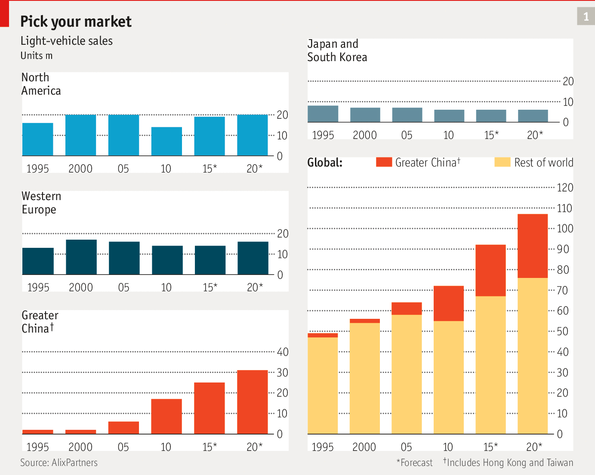Motorists in 2020 will have a widening choice of super-efficient gas and diesel cars, hybrids (which switch between batteries and an internal-combustion engine) and models that run on natural gas or hydrogen. There will be some electric cars (more than now) but they will remain a relatively small segment.
The Road to Driverless Cars
A variety of “driver assistance” technologies are appearing on new cars, which will not only take a lot of the stress out of driving in traffic but also prevent many accidents. More and more new cars can reverse-park, read traffic signs, maintain a safe distance in steady traffic and brake automatically to avoid crashes. Some carmakers are promising technology that detects pedestrians and cyclists, again overruling the driver and stopping the vehicle before it hits them. A number of firms, including Google, are busy trying to take driver assistance to its logical conclusion by creating cars that drive themselves to a chosen destination without a human at the controls. This is where it gets exciting.
Sergey Brin, a co-founder of Google, predicts that driverless cars will be ready for sale to customers within five years. That may be optimistic, but the prototypes that Google already uses to ferry its staff (and a recent visitor from The Economist) along Californian freeways are impressive.
As sensors and assisted-driving software demonstrate their ability to cut accidents, regulators will move to make them compulsory for all new cars. Insurers are already pressing motorists to accept black boxes that measure how carefully they drive: these will provide a mass of data which is likely to show that putting the car on autopilot is often safer than driving it.
The colossal toll of deaths and injuries from road accidents—1.2m killed a year worldwide, and 2m hospital visits a year in America alone—should tumble down, along with the costs to health systems and insurers.
Driverless cars should also ease congestion and save fuel.
Over half of the growth in car sales will be from Greater China
AlixPartners, a consultancy, forecasts that the worldwide market for cars and other light vehicles will expand from about 80m units a year now to 107m in 2020. In China, now the world’s biggest market for cars, annual sales are expected to rise from 19m last year to 31m in 2020 as car ownership spreads to the country’s vast interior. So over the next seven years a Europe-sized market will grow up in China’s hinterland.
54.5 Mpg fuel economy mandate for 2025
There are a lot of ways for automakers to mitigate the impact of those standards and the formulas for calculating the overall fleet performance leaves wiggle room. CAFE mpg tests are not as tough as the EPA mpg tests.
There will be a surge in efficiency with more efficient cars and a reduction in vehicle weight.
It is possible to make super-efficient cars that get more than 100+ mpg now that are four seaters and weigh less than 1000 pounds. Those kinds of cars will not be very common until 2030-2040.
If you liked this article, please give it a quick review on ycombinator or StumbleUpon. Thanks

Brian Wang is a Futurist Thought Leader and a popular Science blogger with 1 million readers per month. His blog Nextbigfuture.com is ranked #1 Science News Blog. It covers many disruptive technology and trends including Space, Robotics, Artificial Intelligence, Medicine, Anti-aging Biotechnology, and Nanotechnology.
Known for identifying cutting edge technologies, he is currently a Co-Founder of a startup and fundraiser for high potential early-stage companies. He is the Head of Research for Allocations for deep technology investments and an Angel Investor at Space Angels.
A frequent speaker at corporations, he has been a TEDx speaker, a Singularity University speaker and guest at numerous interviews for radio and podcasts. He is open to public speaking and advising engagements.



